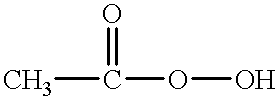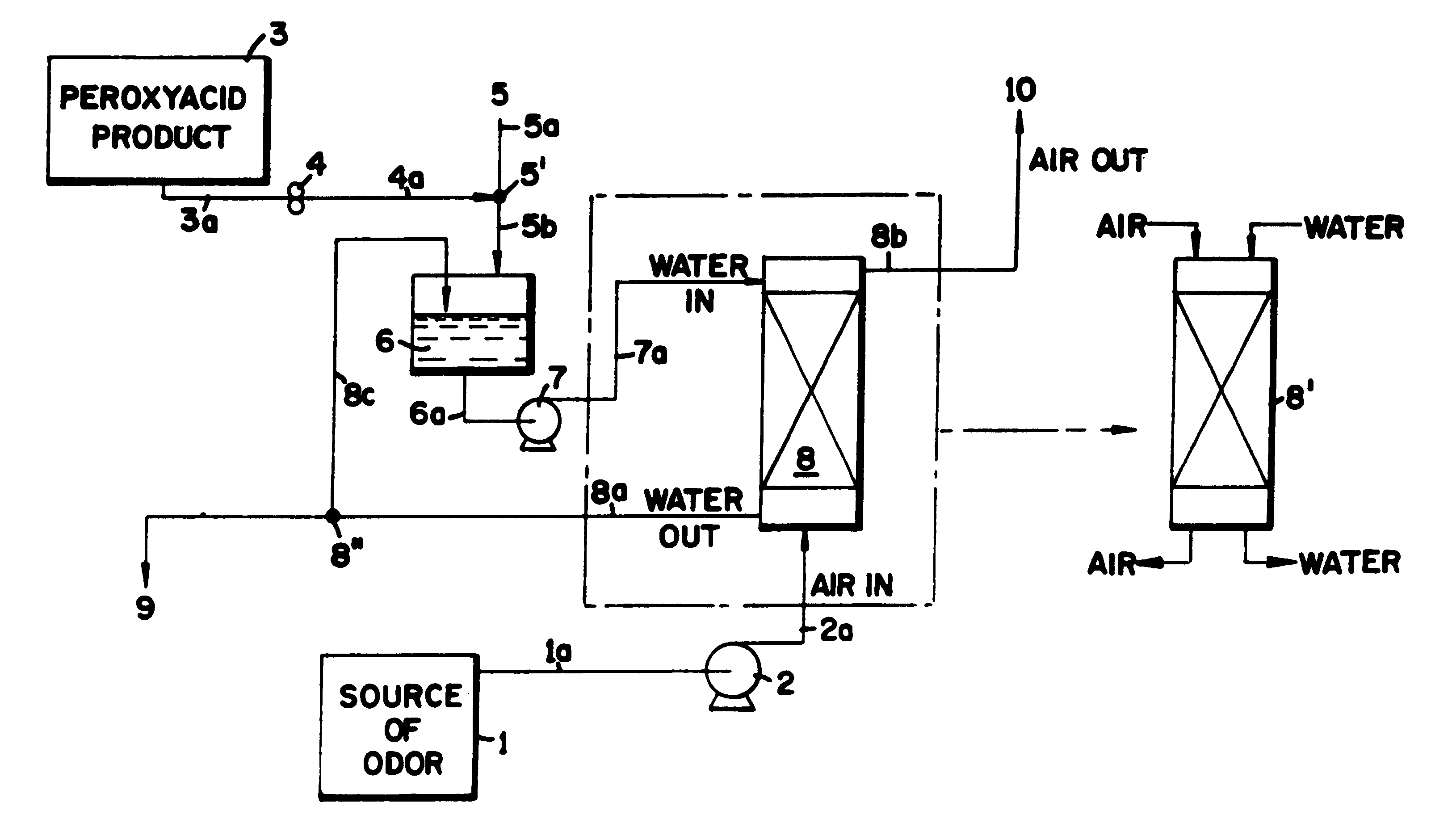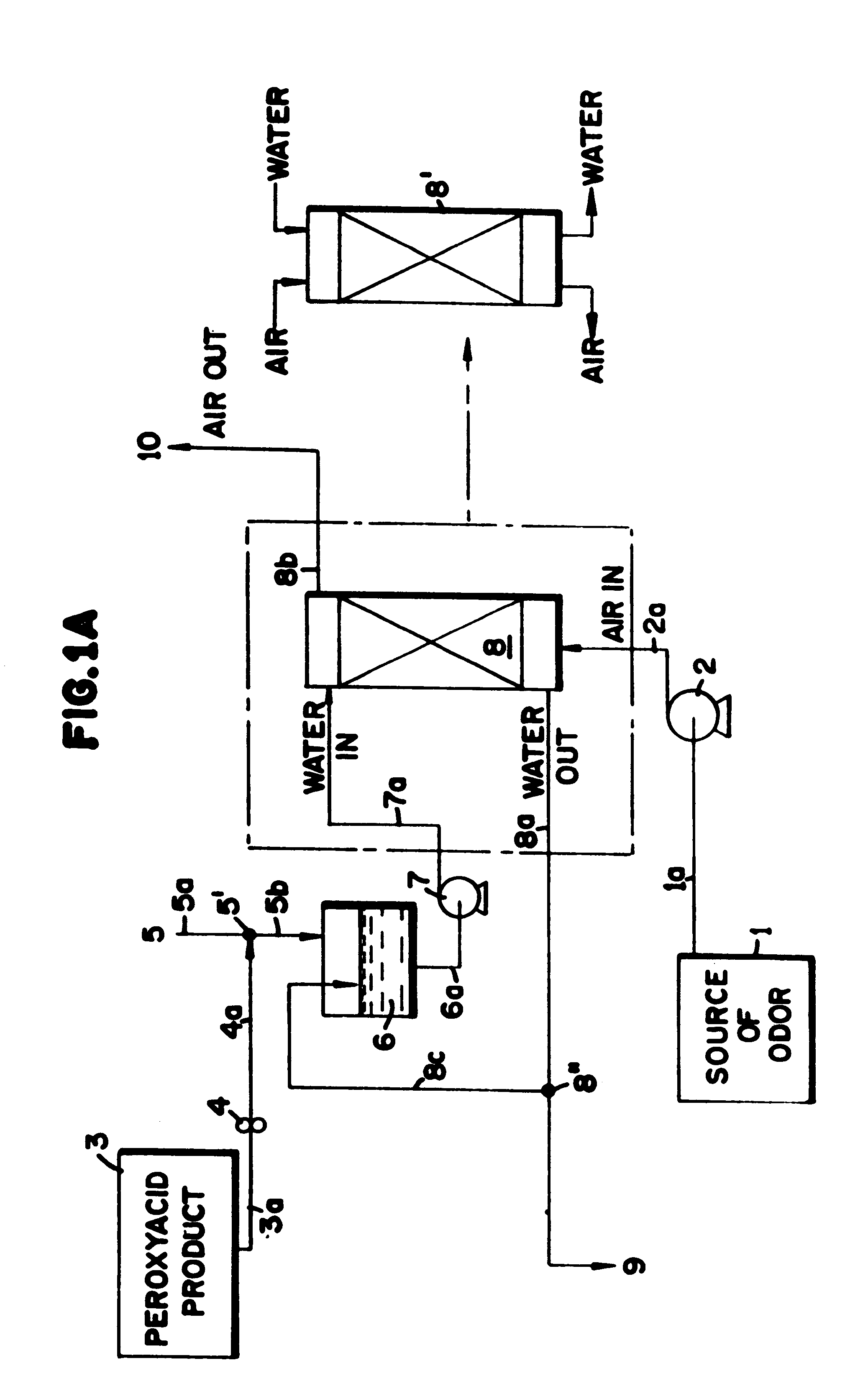Enhanced method of using peroxyacid compounds in odor reduction
a technology of peroxyacid compounds and odor reduction, which is applied in the direction of chemistry apparatus and processes, dispersed particle separation, separation processes, etc., can solve the problems of difficult handling, high toxic chlorine dioxide, and high odor of such compounds, so as to reduce the concentration of odor compounds or compositions, reduce the objectionable odor level, and the effect of effective scrubbing
- Summary
- Abstract
- Description
- Claims
- Application Information
AI Technical Summary
Benefits of technology
Problems solved by technology
Method used
Image
Examples
example 1
EXAMPLE 2
example 3
EXAMPLE 4
Process Parameters
In conventional odor reduction treatment processes, an aqueous solution is dispersed at the top of the scrubber apparatus. In typical applications, the aqueous treatment composition passes through the scrubber at a rate of about 100 to 30,000 L-min.sup.-1, depending upon the size of the scrubber. Typically, the scrubber is a vertical wet scrubber having interior packing. The aqueous solution passes through the column packing in a finely divided form comprising streams, droplets, etc. through the column packing. The rate of solution flow is adjusted depending upon the size of the scrubber, the volumetric flow rate of gas, and the soil level of the gas.
The atmospheric effluent from the plant atmosphere is passed through the scrubber at a rate of about 100 to 3 million liters of atmosphere effluent per minute (atmos. L-min.sup.-1). The temperature of the scrubber is maintained at ambient temperatures, however, somewhat elevated temperatures can enhance the ox...
working example # 1
WORKING EXAMPLE #1
The current application method of using micron-sized (25 to 500 .mu.m) peroxy acid fogs was compared to the peroxy acid treatments described in copending patent application Ser. No. 09 / 007,225. In the first working example, hydrogen sulfide levels were monitored during the hydrolyzing of chicken feathers. This process generates a continuous low-level background of hydrogen sulfide followed by high level bursts when the feathers are transferred from the oven to the dryer. The reduction of this high-level odor in intensity and the rate at which it occurs is critical to emission regulations. In table 1, experiment 1 is the method previously described while experiments 2 and 3 pertain to the current method. Level 1 refers to a peroxyacetic acid dosed level of 500 ppm while level 2 refers to a peroxyacetic acid dosed level of 2,500 ppm.
The test results show a significant improvement both in residual malodor after five minutes and in the speed in which the malodors are r...
PUM
| Property | Measurement | Unit |
|---|---|---|
| droplet size | aaaaa | aaaaa |
| wt % | aaaaa | aaaaa |
| wt % | aaaaa | aaaaa |
Abstract
Description
Claims
Application Information
 Login to View More
Login to View More - R&D
- Intellectual Property
- Life Sciences
- Materials
- Tech Scout
- Unparalleled Data Quality
- Higher Quality Content
- 60% Fewer Hallucinations
Browse by: Latest US Patents, China's latest patents, Technical Efficacy Thesaurus, Application Domain, Technology Topic, Popular Technical Reports.
© 2025 PatSnap. All rights reserved.Legal|Privacy policy|Modern Slavery Act Transparency Statement|Sitemap|About US| Contact US: help@patsnap.com



